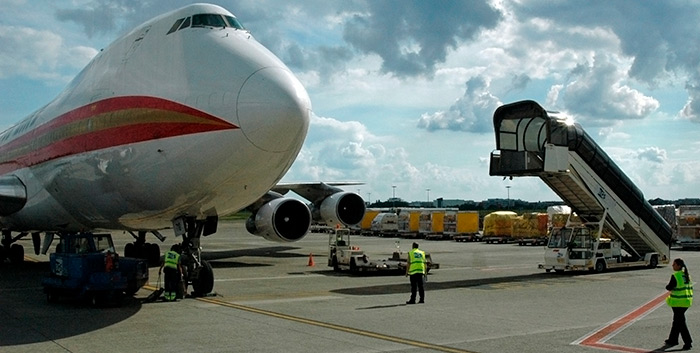
Sometimes it makes sense to repair a pump, and sometimes it makes sense to replace a pump. End users do not typically know which choice is best until the pump has been pulled out of service, disassembled and thoroughly inspected. Pump repairs typically include parts change-outs, but many times replacement parts cannot be obtained in a timely manner.
These types of situations—where delivery times are critical—can impact the end user’s decision to repair or replace a pump, as was the case with one company that provided maintenance services for an airport lift station in Atlanta, Georgia.
Goforth Williamson Inc. (GWI) provides pumps, pump repair and field services to industrial and municipal markets in the southern U.S.
Over the past few years, GWI has completed several pump repairs for a company specializing in building maintenance services.
This facility maintenance company supports a major Atlanta-based airline by performing maintenance services for the airline’s hangar. The facility maintenance group cleans 6,000 aircraft each month and is responsible for maintaining the lift station located inside the airline’s hangar.
In August 2015, the chopper pump operating in the hangar’s wastewater sump failed. The facility maintenance group sprang into action, pulled the pump out of the sump and sent it to the GWI pump repair center for inspection. The inspection revealed that the chopper pump needed a new impeller, a new cutter bar and a rewind on the motor.
“Their chopper pump was completely worn out,” said Andy Bramlett, sales and support rep for GWI. “The issue we were facing was a long lead time on replacement parts. The manufacturer of that chopper pump estimated a four- to six-week delivery for the parts we needed, and that was just too long to get that pump back up and running.”
The facility did not have a backup sump pump, so the maintenance group had to temporarily reroute the flow.
Bramlett contacted the facility maintenance group to offer them another option. “The facility maintenance group needed a sump pump, and they needed it fast,” Bramlett said. To help the facility meet this challenging application, Bramlett suggested a particular type of shredder pump to replace the chopper pump. To arrive at his suggestion, he looked for three main characteristics:
- A pump that could shred solids in the wastewater sewage. The lift station collected raw sewage from the airport hangar. This raw sewage coming out of the planes and from the hangar’s wastewater contained an excessive amount of flushable wipes and rags. The submersible pump would have to shred those solids and operate without clogging.
- Pump reliability. The lift station was designed with a simplex system, meaning only one submersible pump operated in the hangar’s wastewater sump. The team needed a reliable submersible shredder pump to reduce maintenance and avoid downtime.
- Fast delivery. The submersible shredder pump would need to be delivered as soon as possible so the facility maintenance group could install a permanent solution into the hangar’s lift station.
After reviewing the pump curve and system requirements, Bramlett and the team selected a submersible shredder pump designed with dual-shredding technology that would enable the pump to obliterate flushable wipes and other solids that saturate the sewage coming into the hangar’s wastewater lift station. The patent-pending design employs both radial and axial shredding components. A rotating cutter bar with serrated edges traps and shreds solids against the sharp grooves of a radial cutting ring, while multiple axial cutting bars shred any leftover material exiting the radial cutters.
The pump is manufactured in hardened 4440C stainless steel and relies on a high-torque, four-pole motor to ensure difficult solids are handled effectively. Because this particular 5-horsepower (hp) motor operates at 1,750 revolutions per minute (rpm), the hydraulics of this pump matched the hydraulics of the original chopper pump, giving the facility the head and flow it required (up to 42 feet of head and a maximum of 410 gallons per minute).
Protected by double mechanical seals, the motor has an oil-lubricated double seal design that uses an upper seal made of silicon carbon/carbon and a lower seal comprised of silicon carbide/silicon carbide. An additional lip seal is installed above the impeller to prevent the sewage from entering the seal chamber.
Designed to pass larger solids, the pump uses a wear-resistant, two-vane, chrome iron impeller. The two-vane design also incorporates “pump-out” vanes on its rear shroud to help protect the mechanical seal area from solids buildup.
Once this pump was selected, the airline promptly ordered the shredder pump along with a discharge flange adaptor. The 3-inch, American National Standards Institute (ANSI) adaptor flange allowed the facility maintenance group to attach the pump to the existing guide rail system.
“This was a very quick turnaround and a very painless process,” Bramlett said. “The installation went smoothly, and the pump has been operating well since they put it into the lift station in September last year.”


